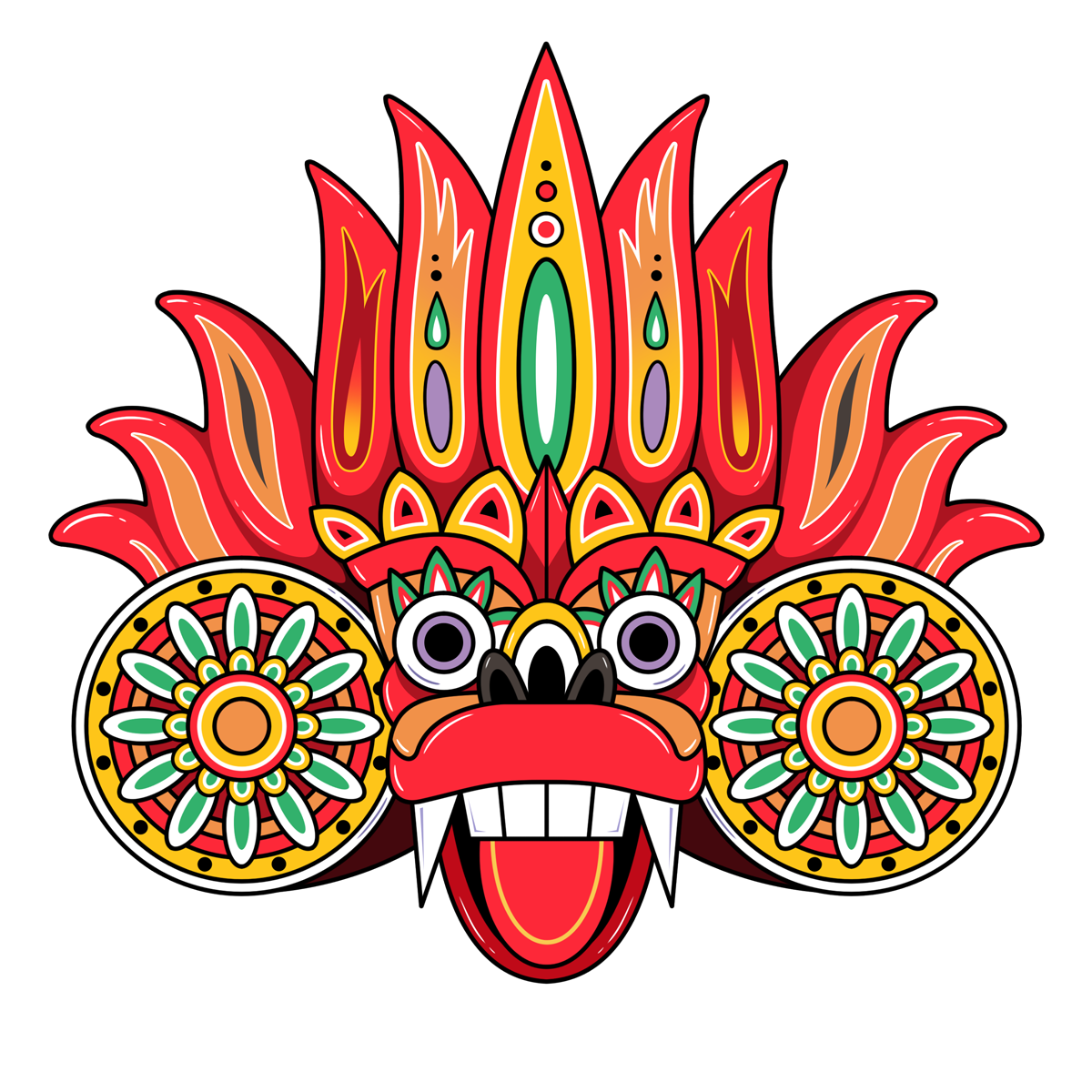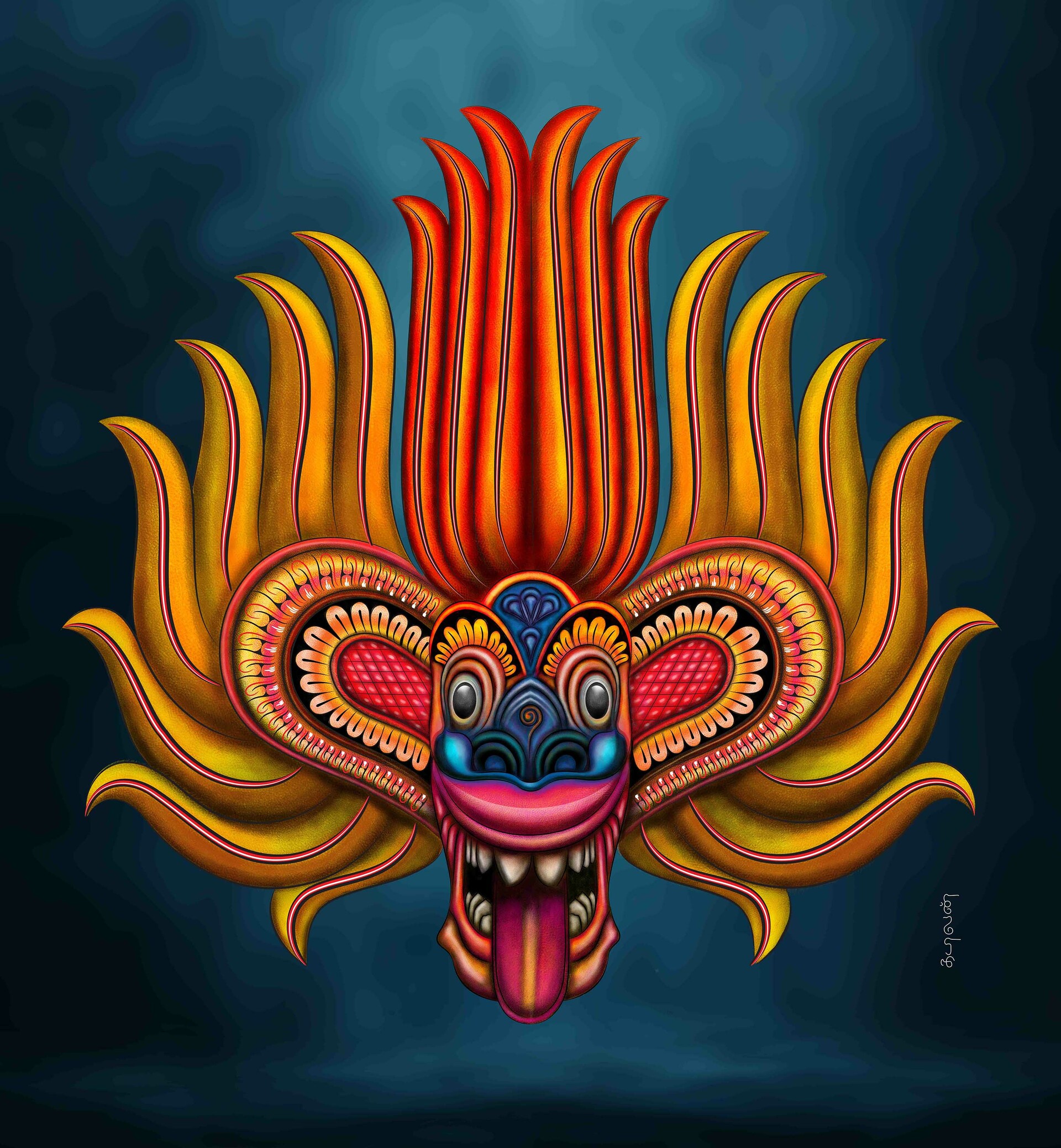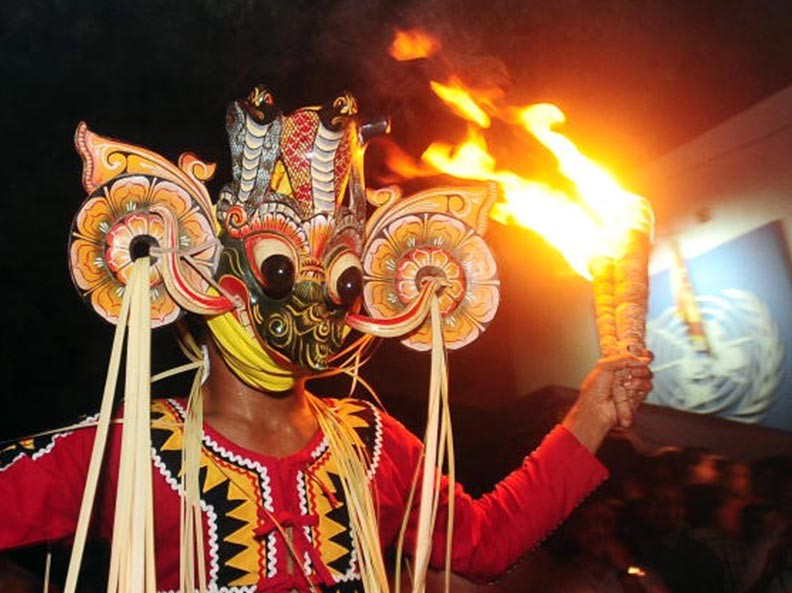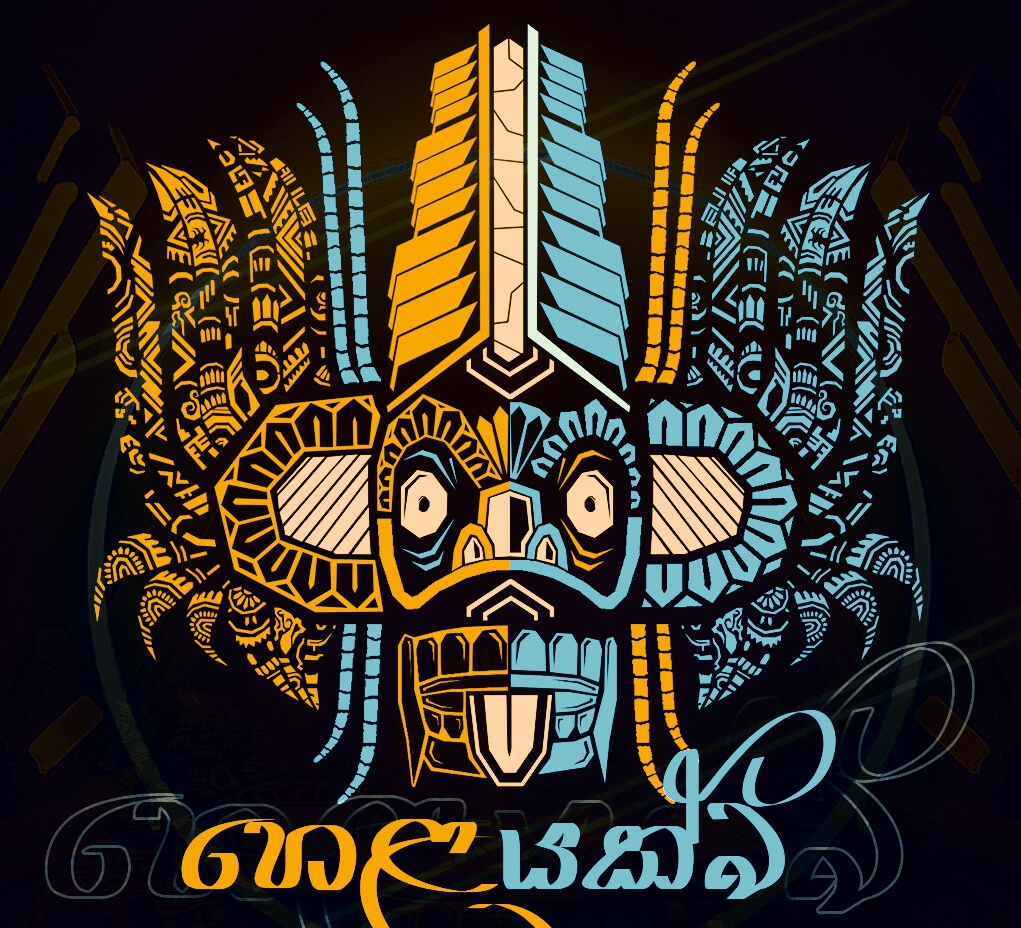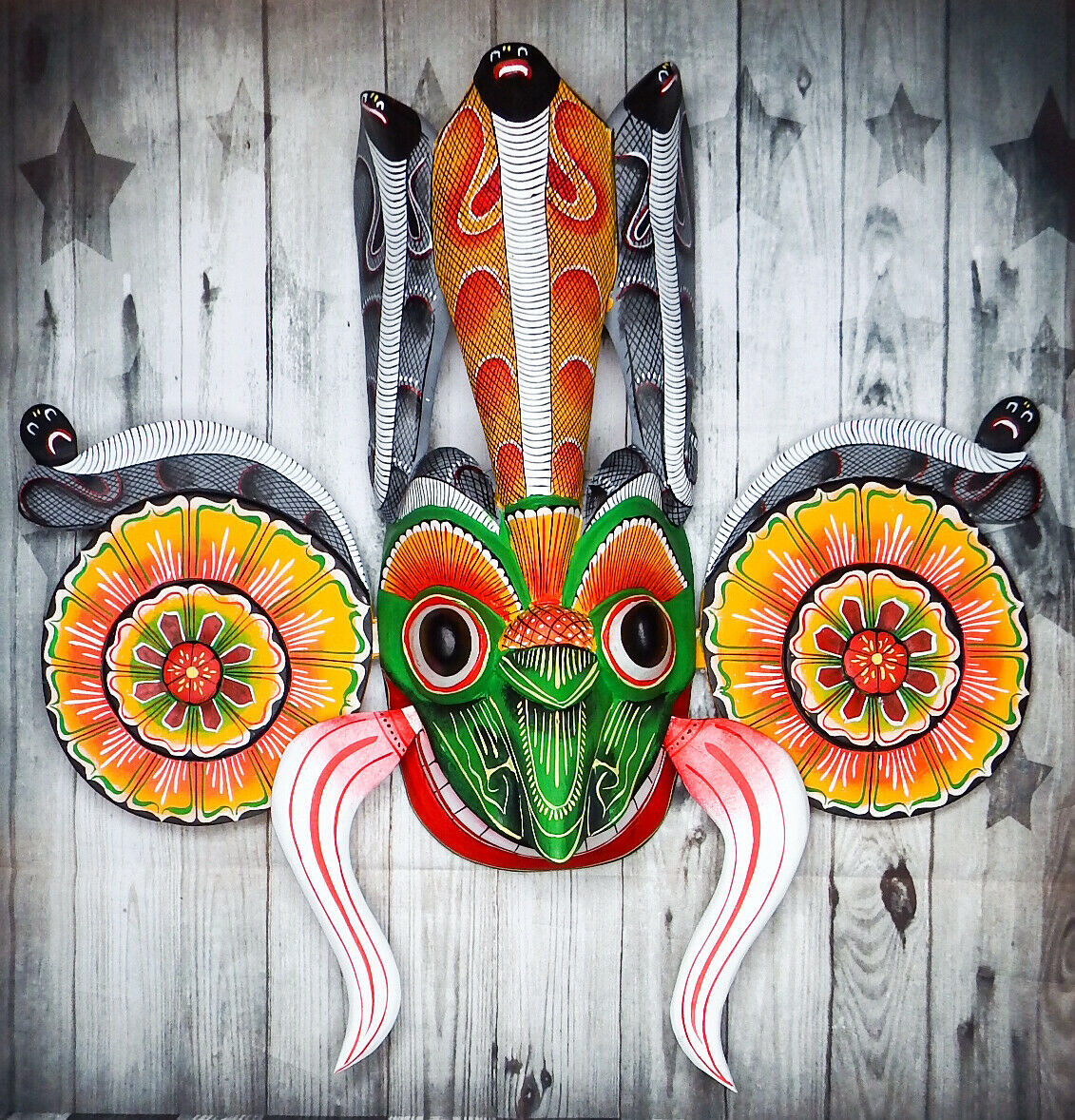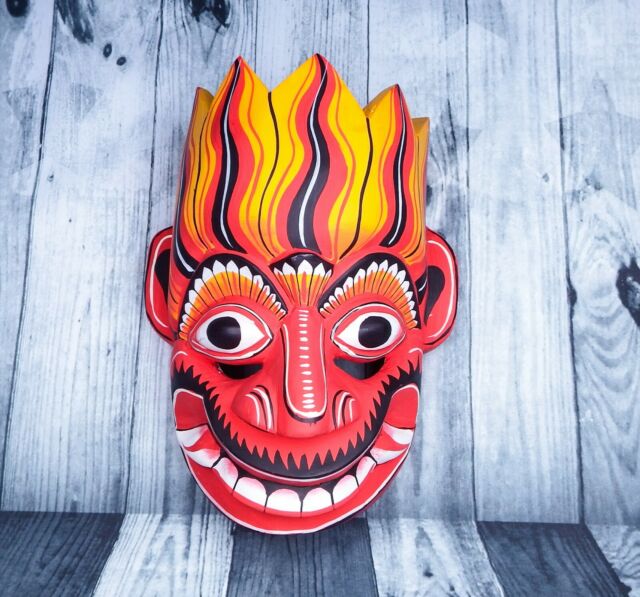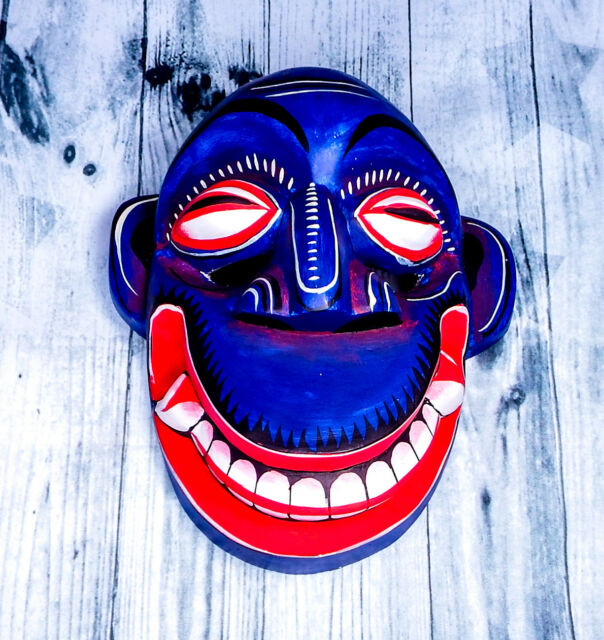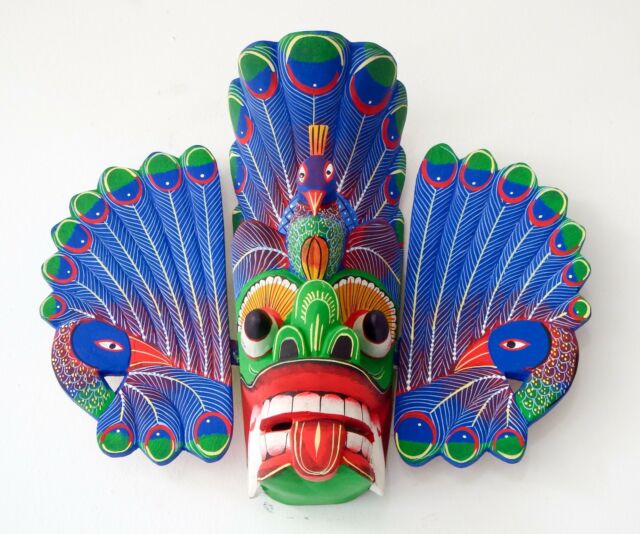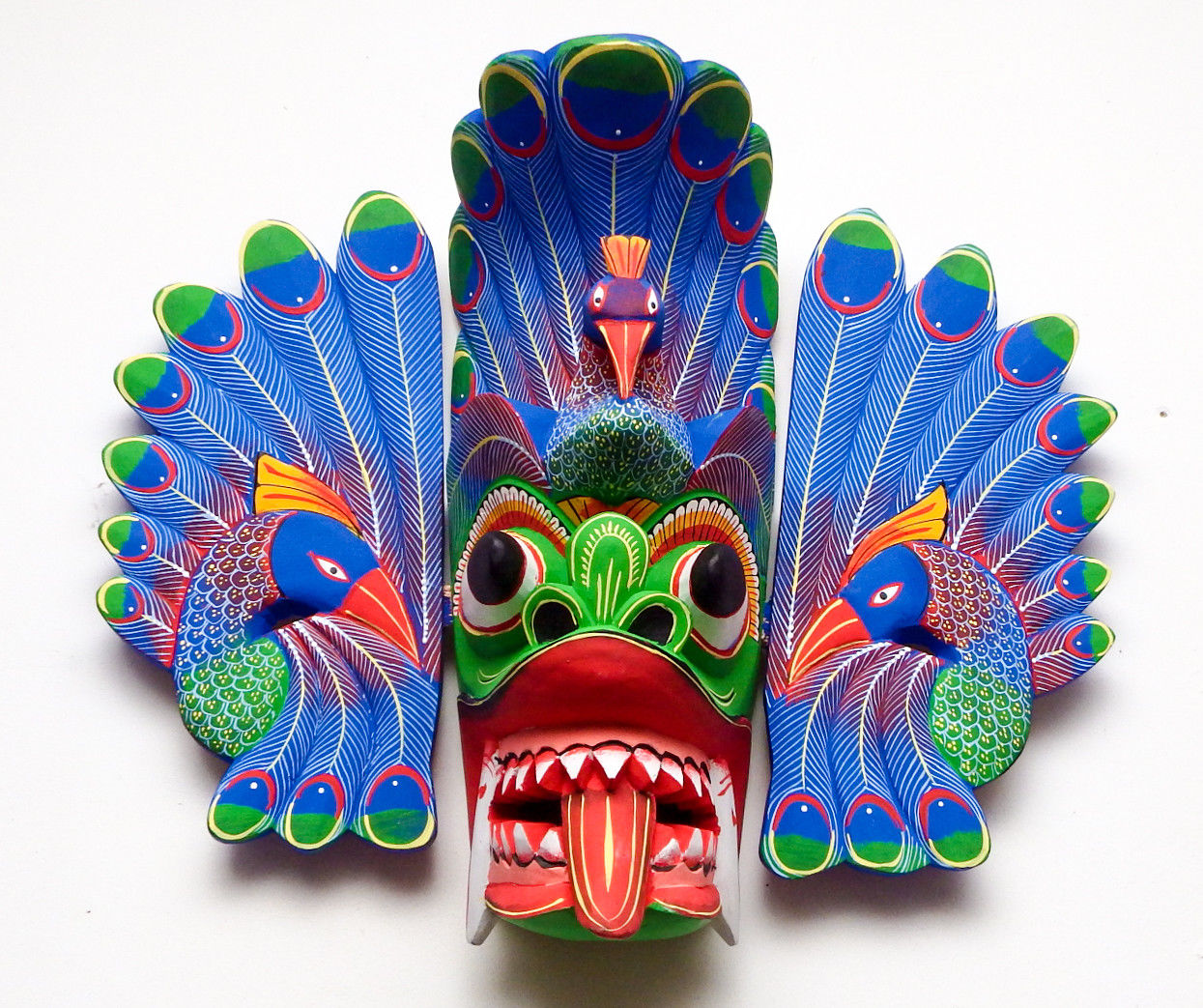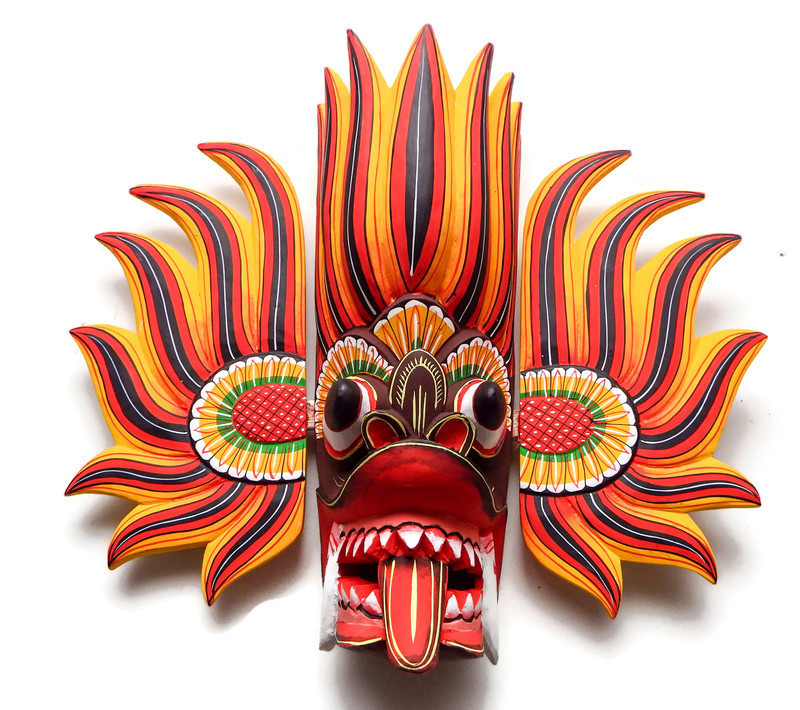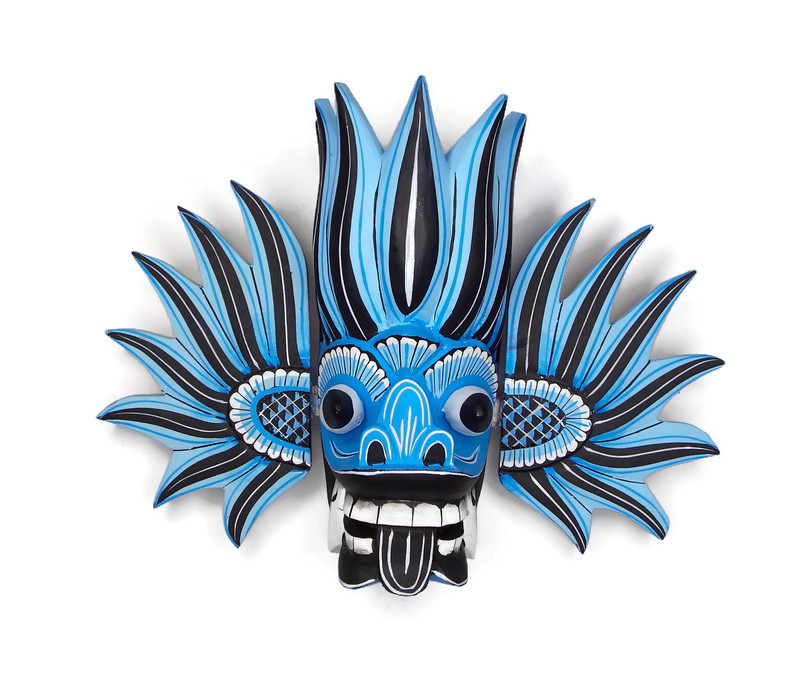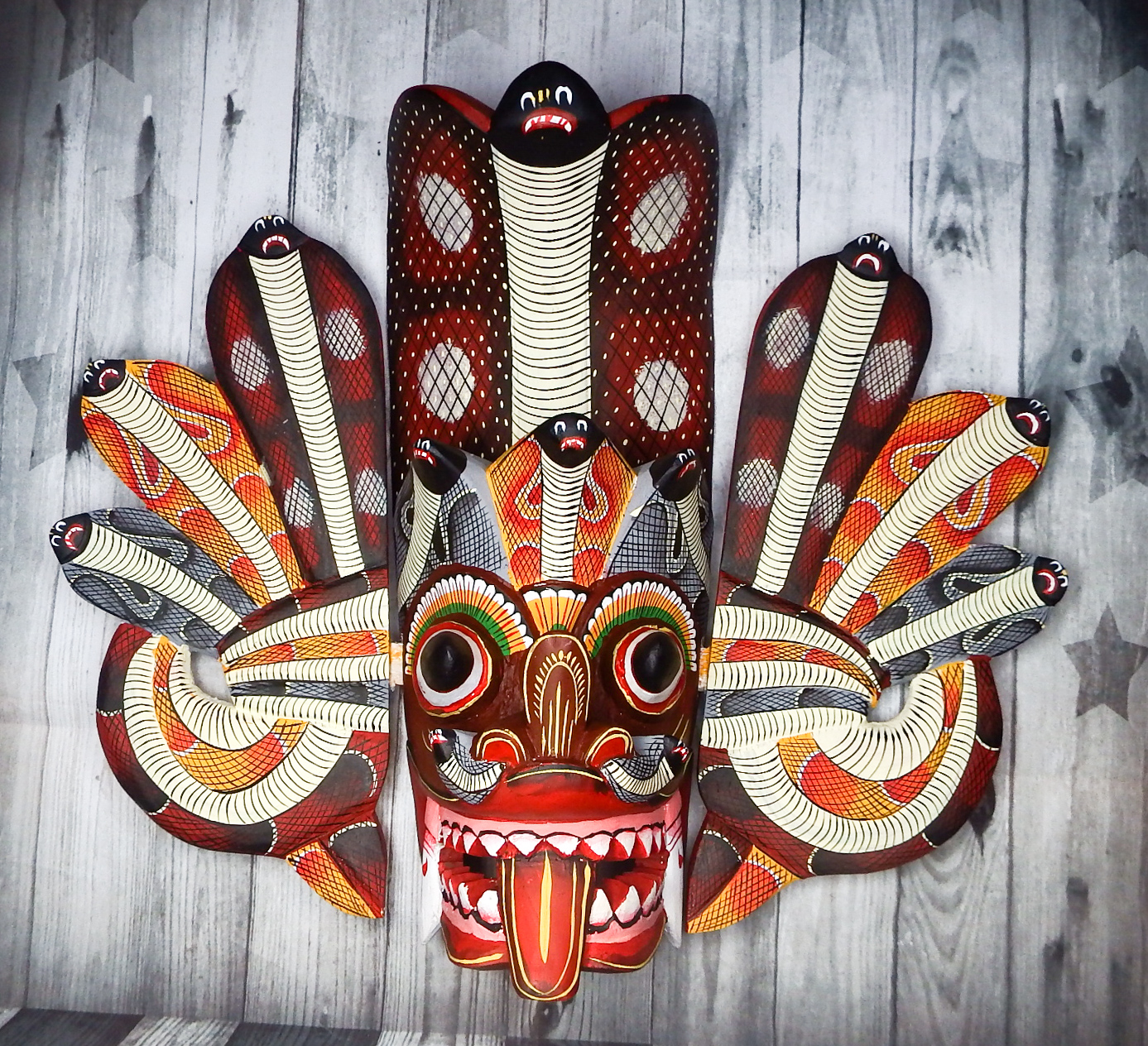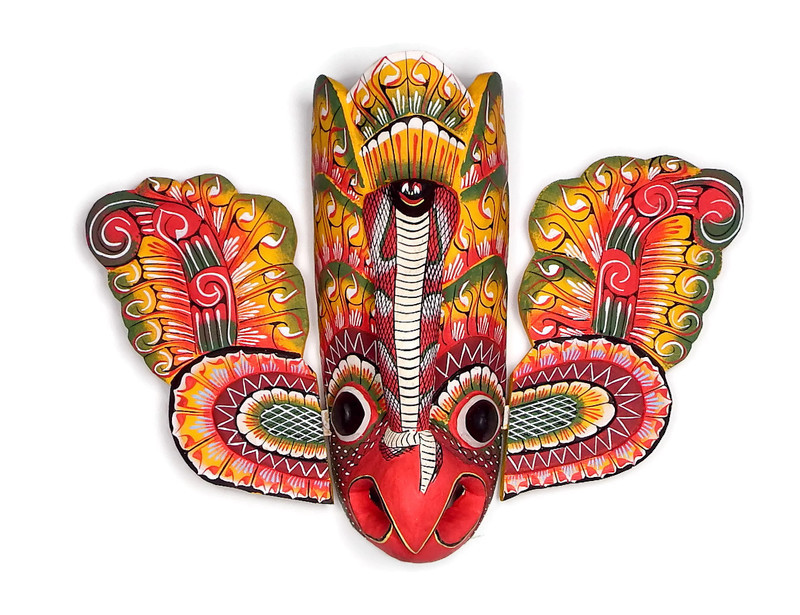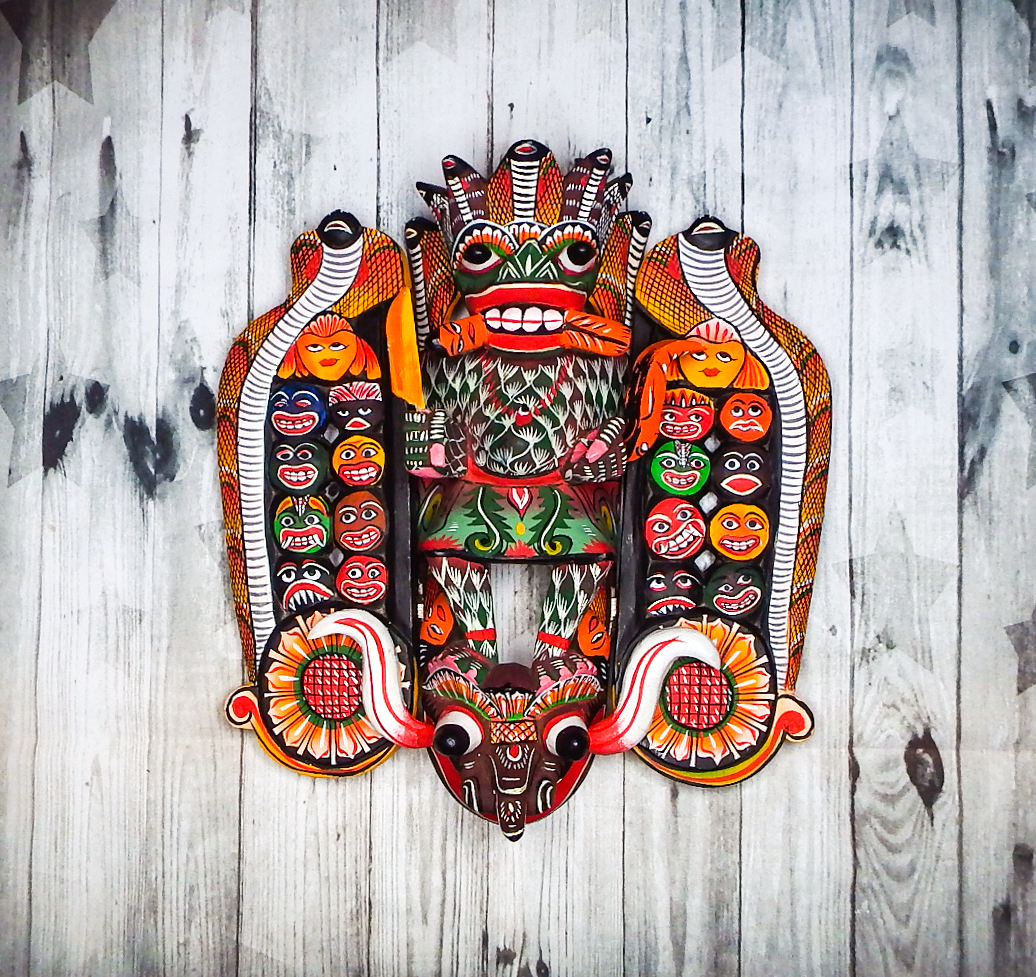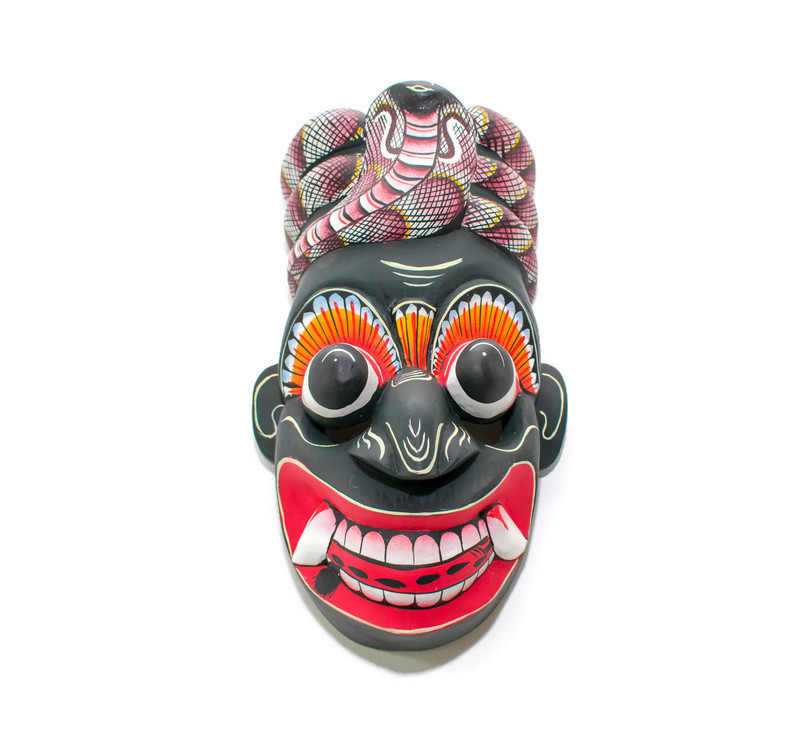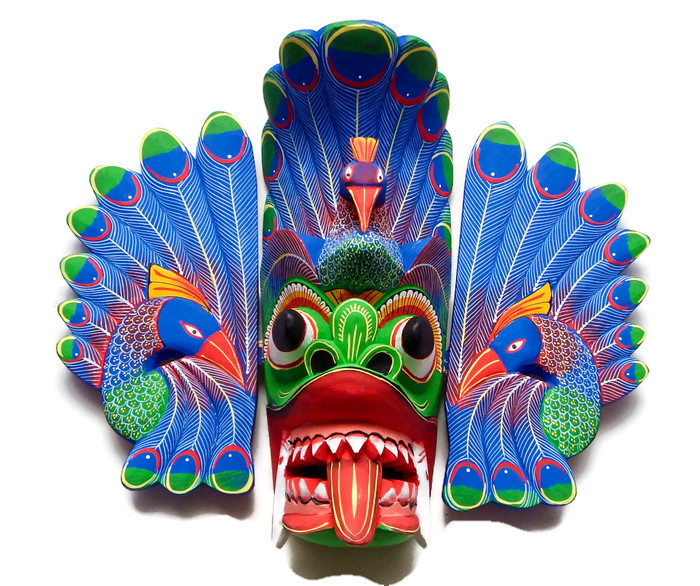Professor M. H. Goonetilleka - (An academic form of masked dancing)
Professor M. H. Goonetilleka, the undisputed authority on Sri Lanka's masks, is not a man to hog the limelight. In fact the unassuming retiring academic is the most of modest of men. However he was in an angry mood recently. He was driven to both anger and sorrow that a man's lifetime contribution to a chosen discipline could be so easily forgotten or brushed aside.
Writing about a recent book on Sri Lanka's kolam tradition one of Prof. Goonetilleka's own colleagues had swooned over the achievements of that writer who was only bringing out his first book without even a passing reference to Prof. Goonetilleka's own pioneering work in the field.
Not that M. H. Goonetilleka needs any advertising or hosannas sung in his name. His works speak for themselves. His English language book 'Masks and Mask Systems of Sri Lanka' and his Sinhala language book 'Kolam, Sanni saha Ves Muhunu' are arguably the most authoritative on this peculiarly intriguing branch of our folk culture.
He is not only an authority on the masks, mask dances and the folk theatre and healing ceremonies of Sri Lanka but also speaks authoritatively of the religious dramas such as the passion play of Duwa which is an outstanding example of how a major Christian theme has been incorporated into Sinhala folk theatre.
Now retired from the Kelaniya University Prof. Goonetillaka's services are much sought after by both foreign scholars as well as overseas universities, research institutes and museums. He has been recognised by the National Museum of Ethnography of Stockholm as the leading expert to document the large collection of Sri Lankan masks owned by the museum.
It is considered one of the major collections in the world and the expertise needed for classifying these masks is not available in Sweden. The documenting of these masks will be part of a project which will also involve making a film of the tradition of Sri Lankan masked dances as well as the art of mask making which is still alive.
Prof. Goonetilleka will also be contributing two scholarly papers to 'South Asia Folklore' a Routledge publication and 'Manisa, 'a bi-annual research journal published by the Indira Gandhi National Centre for the Arts (IGNCA), New Delhi this year. The title of his essay for the first publication will be 'Daha-ata Sanniya and Sri Lanka Masks."
The book review we have already referred to makes a ritual bow to Prof. Sarachchandra's work in the field. While Sarachchandra's book on Sri Lanka's folk theatre is a pioneering work of research it was M. H. Goonetillake, the modest goate-bearded academic who took over the master's torch. It is time that we learnt to honour prophets in our own country without allowing white men and women to do it first.
Book review
Professor G D Kariyawasam - Masks make the men
Title: Sinhala Ves Muhunu (Sinhalese Masks)
Author: Kariyawasam G G Dayananda
Publisher: S.Godage and Brothers (Pvt)Ltd)
Pages 128
Mask-making is an art unique to each nation depending on the milieu, time and needs. Mask-making signifies a milestone of human race. In respect of Sinhalese, it stands out as a tremendous achievement, sign of our race and culture in comparison to countries like Burma, Tibet and Bali islands.
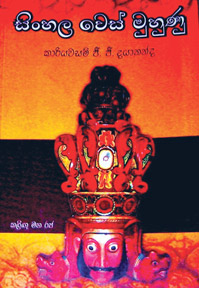 Some elite of world fame claim that our masks are attractive and elegant in appearance. They are very popular among the foreigners. But it is very sad to state that today the maskmaking has turned out to be a source of income sans the cultural aspects. They are made as mere selling products to satisfy tourists.
Some elite of world fame claim that our masks are attractive and elegant in appearance. They are very popular among the foreigners. But it is very sad to state that today the maskmaking has turned out to be a source of income sans the cultural aspects. They are made as mere selling products to satisfy tourists.
Historians and scientists who have done in-depth studies into the origin of human art and culture say that possession of age-old masks by any nation testify to the ancientness of that nation. They are of the view that the masks of the old silently speak about the people and belief of a particular time of history of human evolution. The treasured masks we claimed to have in our possession goes to prove that the Sinhala race is one of the oldest among many nations in the world.
The Sinhalese people of the ancient times did believe in heavenly powers, and they implored the intervention of the divine they could not grasp, when they were afflicted by sickness. Gurus, wearing masks, performed a peculiar cult to cure the sick wearing masks and attributing power inconceivable by human mind to the masks.
Sinhala mask-makers supported the belief of the natives that through the devil dancing sicknesses would be cured. Hence there is an indisputable place for mask-making. The book ‘Sinhala Ves Muhunu’ authored by veteran feature writer and journalist, Kariyawasam G G Dayananda, at length explains the roles played by different masks responding to particular needs of each individual affected by evil spirits. The mask is the weapon the demon priest employs to drive the evil spirits. Perusing the pages of this book I recollect a scene from ‘Rekawa’. It opened new vistas to the feature film industry in Sri Lanka and shot Dr. Lester James Peiris to fame. It secured him a place in the international filmdom. The book refers to the scene I recollect in the film (page 74) in two small paragraphs and tries to impress the reader that Rekawa film itself had sanctioned or had confirmed the age old belief that when a kattadiya or yakedura (demon priest) incense the mask of the gara yaka, he is sure to get a visitor seeking his services.
Confirming this age-old belief of the natives, the author refers to that particular scene in his writing about the Sinhala masks, where the boy Sena, the chief character in the film, is sick. His father with a villager, a mudalali who is keen to earn money using the boy’s special power to make predictions, visit the yakedura (demon priest) requesting him to perform the thovilaya, a religious ritual, to cure the boy of all demoniacal possession. Villagers believe that all diseases are supposed to be inflicted by some evil demon in almost all severe sicknesses and the natives heavily depend on the power of the demon priest than upon medicine.
This passage is sufficient to encourage the reader to peruse the pages with keen interest to learn more about this type of rites, rituals and customs and what role the masks play in imparting the knowledge of art and culture unique to our nation. The book contains articles the author had written to local media randomly. Dealing in particular on Sinhala masks, he comes from Ambalangoda, Maha Ambalangoda, of fame both locally and internationally. This village, miles away from the busy city of Colombo, has a name for mask-making.
The book though small in size deals with various topics in 17 chapters and quotes from various authoritative sources including some foreign writers and authors of recognition to underscore the value of our traditional mask-making and what importance the local polity gives to various masks made to suit the different needs and occasions.
The author speaks about the origin, spreading and different types of masks found here and how craftsmen select the wood suitable mask-making, colours used in painting to satisfy those use the masks in performing religious cults to drive away the evils spirits and cure those sick with different ailments.
Prof Tissa Kariyawasam in his preface observes that Sri Lanka had shot to fame with our art of making wesmuhnu used in shanthikarma. He adds that both sanniyakuma and kolam dance originated from the Ruhunu Rata-the Southern Province.
The Christian clergy and the officials who were here during the times of the British period had tried to understand this cult which has a sort of religious flavor but failed to recognize the artistic value of this performing art. They saw in the masks something symbolically fitted against God and Christian religion.
The art of making masks won the attention of the German elite towards the end of the 19th century and of the Czechs in the beginning of the 20th century. The interest they and some of the local elite showed had greater influence on the rest of the locals and pushed them to do serious study on a treasure they had ignored for centuries. Prof. Kariyawasam had expressed his appreciation for writing a book of this nature targeting the ordinary folk.
J Thilakarathne who served in the editorial staff of Daily Mirror as Provincial News Editor, in his remarks, highlights the salient aspects of the mask-making, the author had laboured to convey to the readers.
The book he says fills a vacuum that existed for a considerable length of time, despite the fact that there had been several books written on the subject of Sinhala drama.
The book would be a useful source to those studying Sinhala drama and its history as a performing art.









